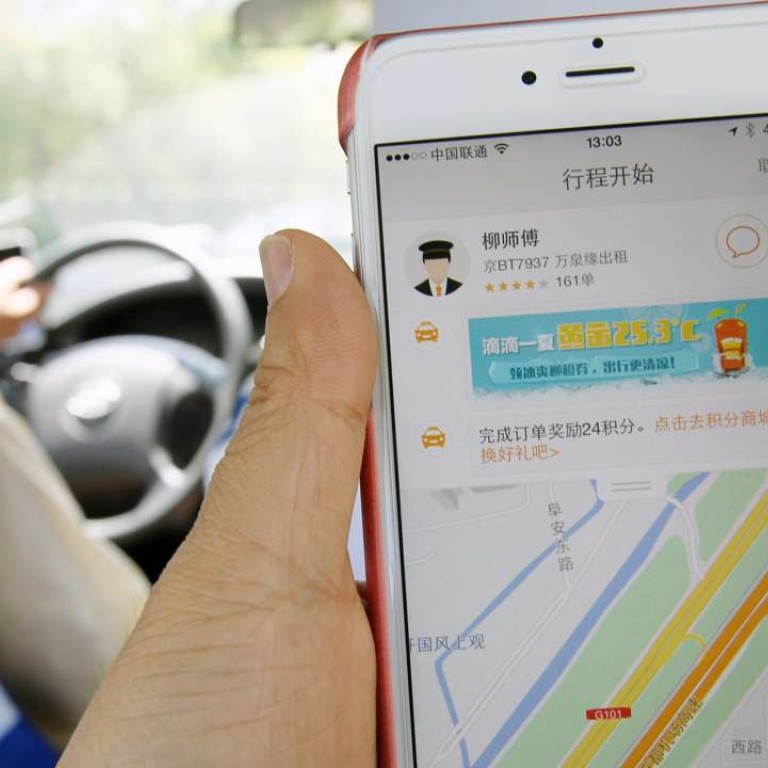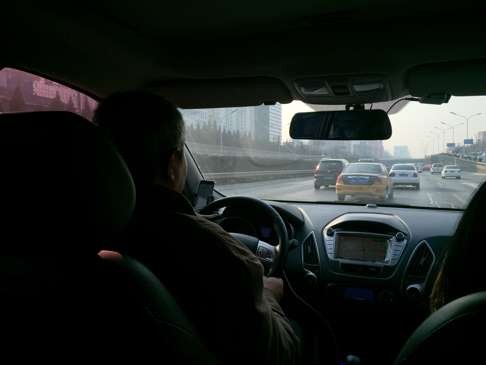
New | China’s Didi recruiting more driver in ride-hailing business through drive-to-own programme
Didi Chuxing , operator of China’s top ride-hailing mobile application, is stepping up efforts to recruit more drivers on the mainland than rival Uber through a novel drive-to-own programme involving selected car models.
The Beijing-based company formerly known as Didi Kuaidi expects to sign up 100,000 new full-time drivers in five mainland Chinese cities under that campaign.
The programme was rolled out after many drivers working for Didi and rival Uber went on a one-day strike last Friday in the Chinese capital, protesting against the two companies’ move to slash the proportion of the fares and subsidies they receive by half.
In January, a Didi driver in Beijing can get 220 yuan as daily subsidies after completing 22 orders a day. In April, the subsidies were lowered to only 90 yuan.
Didi’s drive-to-own programme provides a new car to the successful applicant for free as long as the driver puts down a deposit of 20,000 yuan, the company said.

All three car models are made in China, including C-Quatre from Dongfeng Peugeot Citroen Automobile Company, the BYD Qin plug-in hybrid compact sedan from BYD Auto and the Sunny by the Dongfeng-Nissan joint venture.
The Didi deal involves signing up to work as a full-time driver under a revenue-sharing arrangement with the company. So-called veterans and laid-off workers from state-owned enterprises may enjoy 2,000 yuan in further cuts to the deposit, the company said.
Across the Pacific Ocean, Uber started early this month its Advance Pay programme that offers new drivers in the US states of California and Michigan cash advances of up to US$1,000 through a partnership with the financial services startup Clearbanc. Borrowers under the Uber scheme have 15 weeks to pay the money back.
Didi’s drive-to-own programme is different in that the new owner doesn’t need to pay anything to have the car but only needs to meet a certain number of gross bookings over a two to three year period, the company added.
A driver could set up a fleet in which he or she partners with up to 49 people to join the drive-to-own programme, and then enjoy 2,000 yuan bonus for each new car.
The programme followed a partnership entered into between Didi and China Merchants Bank in January to provide car financing to its estimated 14 million registered drivers across the country. Didi’s app had about 300 million mainland users.
China Merchants also made an undisclosed strategic investment in Didi. It joined other big-name Didi investors such as Alibaba Group, Tencent Holdings, Beijing Automotive Group and mainland sovereign wealth fund China Investment Corporation.
Mainland media had earlier reported a full-time Didi driver could earn more than 3,000 yuan each week in Shanghai, Beijing and Guangzhou, but only about 1,000 yuan in the past month when the company lowered the subsidies.
Didi and Uber have raised more than US$4 billion in investments between them the past year, while offering subsidies and other incentives to gain market share in the world’s second-largest economy.
More local governments on the mainland such as those in Guangzhou, Shenzhen and Beijing now require these app operators to no longer subsidise commuter fares and drivers.
Local taxi drivers in Shenzhen said Didi’s drive-to-own programme only aggravates traffic jams in the city and poses potential safety problems to passengers.
“Every day, thousands of vehicles working for Didi create congestion on Shenzhen’s roads. The authorities should not approve the new driver programme,” said Lin Qiao, a Shenzhen taxi driver.

